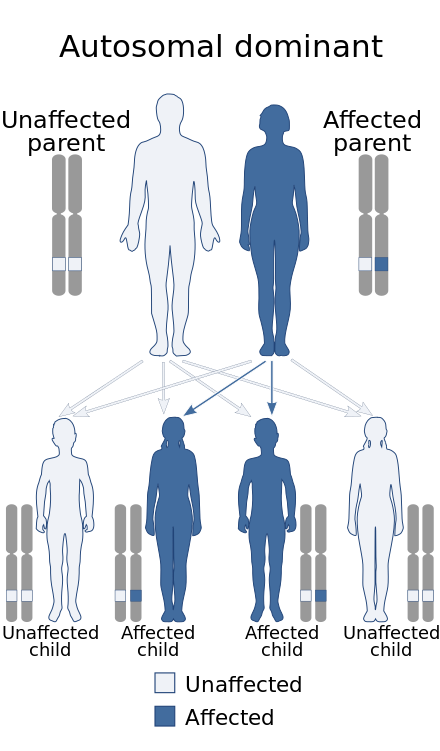Noonan Syndrome
Noonan syndrome (NS) is a genetic disorder involving mildly unusual facial features, short height, congenital heart disease, bleeding problems, and skeletal malformations. Named after American paediatric cardiologist Jacqueline Noonan, who first described it in 1963, NS can lead to complications such as leukaemia. The disorder can be inherited as an autosomal dominant condition or occur as a new mutation.
Signs and Symptoms

The most common signs leading to a diagnosis of NS are unique facial characteristics and musculoskeletal features. Facial features include widely spaced eyes, light-coloured eyes, low-set ears, a short neck, and a small lower jaw. Intelligence is often normal, but complications can include leukaemia.
Head
Individuals with NS often have a large head with excess skin on the back of the neck, a low hairline at the nape, a high hairline at the front, a triangular face shape, and a broad forehead. Hypertelorism (widely set eyes) is present in 95% of cases, often accompanied by epicanthal folds, ptosis, proptosis, strabismus, nystagmus, and refractive visual errors. Ears are frequently low-set, backward-rotated, with a thick helix and incomplete folding. Development of the mouth may result in a deeply grooved philtrum, micrognathia, and a high arched palate.
Skin
Skin manifestations in NS include lymphedema, keloid formation, hyperkeratosis, pigmented nevi, and connective tissue disease.
Musculoskeletal
Musculoskeletal abnormalities may include bluntly ended fingers, extra padding on fingers and toes, oedema of the hands and feet, and cubitus valgus. Spinal abnormalities, such as scoliosis, are present in up to 30% of cases. Other issues may include pectus carinatum and pectus excavatum. Muscle abnormalities can present as hypotonia, leading to lordosis due to poor abdominal muscle tone.
Heart
Noonan syndrome is the second most common syndromic cause of congenital heart disease. About 50-70% of individuals have congenital heart defects, with pulmonary valvular stenosis being the most common. Other defects include hypertrophic cardiomyopathy, ventricular septal defects, and atrial septal defects.
Gastrointestinal and Genitourinary System
GI symptoms can include swallowing difficulties, low gut motility, gastroparesis, intestinal malrotation, and frequent vomiting, leading to decreased appetite and failure to thrive. In some males, testicles do not descend (cryptorchidism).
Neurological and Cognitive Impairments
Cognitive abilities in individuals with NS range broadly, from mild intellectual disability to normal intelligence. Seizures have been reported. Occasionally, Chiari malformation type 1, which can lead to hydrocephalus, may occur.
Causes

NS is caused by mutations in the Ras/mitogen-activated protein kinase signalling pathways, responsible for about 70% of cases. The PTPN11 gene accounts for 50% of genetically diagnosed cases, while SOS1, RAF1, and RIT1 contribute to additional cases. Genetic testing can confirm the diagnosis, though 15-20% of cases remain genetically undiagnosed.
Diagnosis
Diagnosis is based on clinical symptoms, medical imaging, and blood tests, confirmed with genetic testing. Despite the identification of 14 causative genes, the absence of a known mutation does not exclude the diagnosis.
Before Birth
Prenatal features that might suggest NS include cystic hygroma, increased nuchal translucency, pleural effusion, and oedema.
Differential Diagnosis
NS can be differentiated from Turner syndrome, Watson syndrome, Cardiofaciocutaneous syndrome, Costello syndrome, Neurofibromatosis 1, and Williams syndrome, based on specific clinical features and genetic causes.
Management
Treatment is symptom-based. Cardiovascular complications are managed similarly to the general population. Bleeding diathesis is treated based on specific factor deficiencies. Neuropsychological testing, educational customisation, speech therapy, and physical and occupational therapy may be required.
Anaesthesia Risk
Some individuals with NS may develop malignant hyperthermia, although the gene mutation differs from those known to be associated with this condition.
History
Jacqueline Noonan first described NS in 1963, noting characteristic physical features and congenital heart defects in affected children. The condition was officially recognised as "Noonan syndrome" in 1971.
Self-assessment MCQs (single best answer)
Who first described Noonan Syndrome?
Which of the following is NOT a common facial feature of Noonan Syndrome?
What percentage of individuals with Noonan Syndrome have congenital heart defects?
Which gene is responsible for about 50% of genetically diagnosed cases of Noonan Syndrome?
What is the most common type of congenital heart defect in Noonan Syndrome?
What is the inheritance pattern of Noonan Syndrome?
Which of the following is a musculoskeletal feature of Noonan Syndrome?
What is a common neurological complication associated with Noonan Syndrome?
Which prenatal feature might suggest Noonan Syndrome?
What percentage of Noonan Syndrome cases remain genetically undiagnosed?
Dentaljuce
Dentaljuce provides Enhanced Continuing Professional Development (CPD) with GDC-approved Certificates for dental professionals worldwide.
Founded in 2009 by the award-winning Masters team from the School of Dentistry at the University of Birmingham, Dentaljuce has established itself as the leading platform for online CPD.
With over 100 high-quality online courses available for a single annual membership fee, Dentaljuce offers comprehensive e-learning designed for busy dental professionals.
The courses cover a complete range of topics, from clinical skills to patient communication, and are suitable for dentists, nurses, hygienists, therapists, students, and practice managers.
Dentaljuce features Dr. Aiden, a dentally trained AI-powered personal tutor available 24/7 to assist with queries and provide guidance through complex topics, enhancing the learning experience.
Check out our range of courses, or sign up now!


